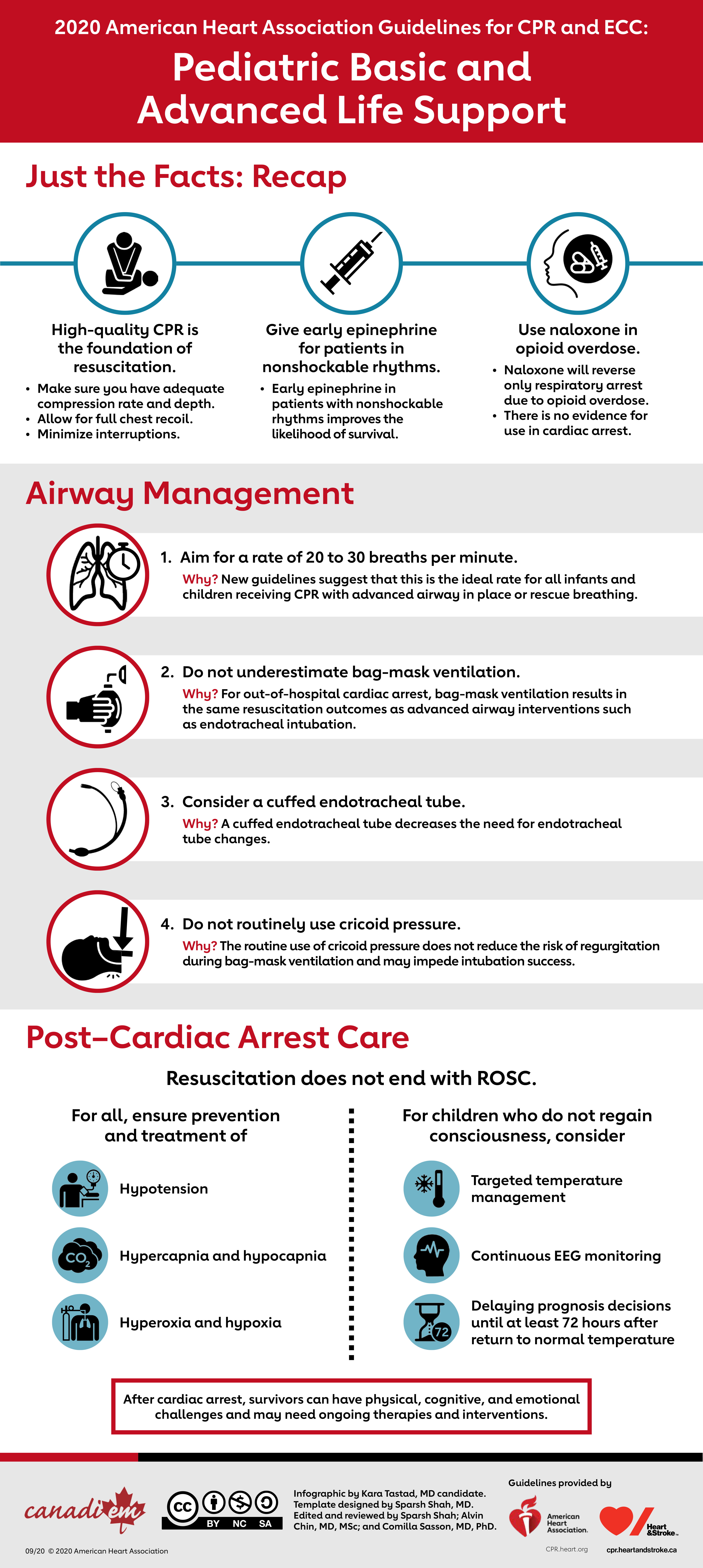This year, the American Heart Association released the updated 2020 guidelines for cardiopulmonary resuscitation and emergency cardiovascular care; the first major update to the internationally recognized guideline in five years.
The American Heart Association (AHA) has updated its Pediatric Basic and Advanced Life Support (PALS) guidelines since their last update in 2010. These new recommendations focus on airway management, emphasizing that pediatric patients with an advanced airway should have a target respiratory rate of 1 breath every 2-3 seconds (20-30 breaths per minute). This is changed from the past recommendation of 1 breath every 6 seconds.
The AHA also emphasizes that the use of cricoid pressure is not recommended and that cuffed endotracheal tubes should be used over uncuffed ETTs when intubating. The new updates also emphasize the importance of post-cardiac care after ROSC, and include updates on hemodynamically unstable patients. The top 10 must knows are as follows:
- High-quality cardiopulmonary resuscitation (CPR) is the foundation of resuscitation. New data reaffirm the key components of high-quality CPR: providing adequate chest compression rate (≥1/3 anteroposterior depth of chest) and depth (100-120/min), minimizing interruptions in CPR, allowing full chest recoil between compressions, and avoiding excessive ventilation.
- A respiratory rate of 20 to 30 breaths per minute is new for infants and children who are (a) receiving CPR with an advanced airway in place or (b) receiving rescue breathing and have a pulse.
- For patients with nonshockable rhythms, the earlier epinephrine is administered after CPR initiation, the more likely the patient is to survive.
- Using a cuffed endotracheal tube decreases the need for endotracheal tube changes.
- The routine use of cricoid pressure does not reduce the risk of regurgitation during bag-mask ventilation and may impede intubation success.
- For out-of-hospital cardiac arrest, bag-mask ventilation results in the same resuscitation outcomes as advanced airway interventions such as endotracheal intubation.
- Resuscitation does not end with the return of spontaneous circulation (ROSC). Excellent post-cardiac arrest care is critically important to achieving the best patient outcomes. For children who do not regain consciousness after ROSC, this care includes targeted temperature management and continuous electroencephalography monitoring. For all children, the prevention and/or treatment of hypotension, hyperoxia or hypoxia, and hypercapnia or hypocapnia is important.
- After discharge from the hospital, cardiac arrest survivors can have physical, cognitive, and emotional challenges and may need ongoing therapies and interventions.
- Naloxone can reverse respiratory arrest due to opioid overdose, but there is no evidence that it benefits patients in cardiac arrest.
- Fluid resuscitation in sepsis is based on patient response and requires frequent reassessment. Balanced crystalloid, unbalanced crystalloid, and colloid fluids are all acceptable for sepsis resuscitation. Epinephrine or norepinephrine infusions are used for fluid-refractory septic shock.


Further reading:
Heart & Stroke 2020 Guidelines for CPR and Emergency Cardiovascular Care
American Heart Association 2020 Guidelines for CPR and Emergency Cardiovascular Care




